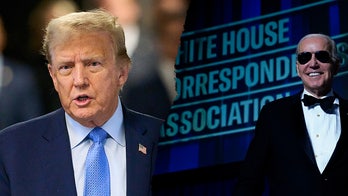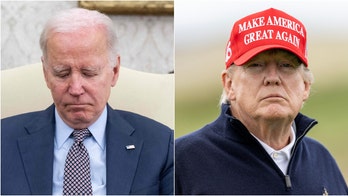Solynrda Looked Like a Sure Bet in the Heady Early Days of Obama Era
“I thought the White House might want to take advantage of this event to highlight a highly successful public/private partnership.”
-- Obama adviser David Prend in an email to a White House aide encouraging the president to publicly embrace Solyndra, a solar-panel manufacturer that Prend’s investment firm partly owned.
The latest figure to emerge in Soylndra green-jobs scandal is David Prend, a co-founder of the Boston-based venture capital firm Rockport Capital, who used his role as a green energy adviser to the Obama administration to push for a half-billion-dollar subsidized loan for Solyndra even though his company was a major investor in the solar-panel manufacturer.
Emails obtained by congressional investigators show that Prend was perhaps the first to push for Solyndra inside the administration, touting the company in a February 2009 meeting with Carol Browner, President Obama’s former global warming and energy czar. At the time, Prend’s firm held a 7.5 percent stake in Solyndra.
Prend also pushed for Solyndra to be included in a Navy contract as part of the administration’s plan to switch the military to green energy. The Wall Street Journal reports that the Navy effort came in the spring of this year, long after it was clear that the company was kaput. The Navy seemed to be on the cusp of including Solyndra in the $1 million pilot project, but had to drop the well-connected firm as bankruptcy approached in September.
The Navy deal came after Rockport and other investors agreed to a $75 million rescue loan package to keep Solyndra afloat after the firm’s initial violation of the federal loan agreement at the end of last year.
The other inside man on the Solyndra loan was Steve Spinner, a former NBC executive who became a green energy guru who helped steer energy and environmental policy for the administration starting in the 2008 transition team. Spinner pushed for Solyndra to get the loan even though his wife was the lawyer for the now defunct solar firm.
But the best friend Solyndra had was George Kaiser, whose family foundation was the largest investor in the firm. Kaiser made 16 trips to the White House between March 2009 and April 2011 to consult with officials. Kaiser, a billionaire devoted to liberal causes who donated $53,500 to Obama’s 2008 campaign and raised may times more, has said that he didn’t lobby for the government loan. But the frequent presence of such an important patron who was visibly attached to Solyndra would have been an encouragement of its own.
Treasury officials will today testify in the ongoing congressional probe into the loan. They will be asked to explain emails that show that many at Treasury had opposed making the loan, including Secretary Timothy Geithner. Obama disregarded Geithner’s warnings on the project and backed Energy Secretary Steven Chu (Obama’s fellow Nobel laureate) in proceeding with the loan despite market indicators.
Why did Chu and so many at the White House plow ahead with the loans despite the warnings that the company’s business model was already a bust? They were betting on change.
No matter how influential the backers, no president would authorize such a huge loan on the belief that it would be a failure. But the Obama team was willing to go along with Prend, Skinner and Kaiser for one simple reason: The president had a plan to make carbon costly.
Emails from senior Energy Department advisers Matt Rogers and Rod O’Connor from May of 2010 make it clear that as the company was starting to go down, the last hope was for the Democratically dominated Congress to finally push through a global warming bill that would make traditional energy sources more expensive and drive up demand for less efficient but less polluting solar cells.
Whatever the flaws in the Solyndra business model, the president likely saw only upside in siding with his donors and key advisers on Solyndra. Remember that in February 2009, no one in Washington would have doubted that Obama would succeed in imposing his plan to require businesses to purchase transferable credits for the right to emit carbon dioxide, or at least something that would have made energy more expensive.
A handful of moderate Senate Democrats stopped the president’s plan. But had he succeeded, higher energy costs and the chance for companies to earn extra credits for the right to use other, more efficient energy sources by buying solar panels would have made Solynrda profitable, however bad its original business plan had been.
Did I Catch a Niner in There?
“I think Nine-Nine-Nine is a wonderful plan. I think a lot of the candidates have very good plans for tax reform, but I love the Nine-Nine-Nine Plan. I think it's a great first step.”
-- Economist Arthur Laffer, top tax adviser to President Ronald Reagan, on “Special Report with Bret Baier.”
Arthur Laffer, one of the high priests of Reaganomics, who told Bret Baier that Herman Cain’s Nine-Nine-Nine Plan is “wonderful.” House GOP Budget Boss Paul Ryan told the Daily Caller that he “loves” Cain’s plan.
In Republican circles those are two very big boosters, especially for a guy who is said by critics to lack the intellectual heft to be president. Laffer and Ryan both have their own ideas about taxes, but agree that Cain’s proposal for replacing the current federal tax structure with a 9 percent tax on corporate profits, a 9 percent national sales tax and a flat 9 percent income tax would be a big improvement over the current convoluted system.
One of the biggest knocks on Cain has been his instance on not identifying his economic advisers other then Rich Lowrie, a Cleveland-based investment adviser. The revelation that Cain consulted with Laffer on the plan and the praise from Ryan, the heartthrob of fiscal nerds everywhere, will go a long way in adding some credibility.
What Laffer and Ryan really like about the idea is that it simplifies and broadens the U.S. tax structure. Most on the right prefer the idea of a flat tax – just one or two low rates and no deductions – and have reservations about the idea of a national sales tax, but Cain’s hybrid plan is winning admirers. They like most the idea that it starts from scratch, rather than the tinkering offered by other candidates.
It would be much harder now for critics like former Utah Gov. Jon Huntsman to mock Cain’s program as something that sounds like a pizza price.
The message to Mitt Romney is that at some point soon he will have to start treating Cain and as a real threat.
Romney has kept his attacks focused on Texas Gov. Rick Perry, who is looking to start a comeback today with an address on domestic energy production in Pittsburgh highlighting the new discoveries of natural gas in Appalachia.
Romney’s camp attacked Perry even for this, pointing out that there were 1 million unemployed people in Texas in August, three times as many residents as the city of Pittsburgh. Of course, Texas has a population 81 times the size of Pittsburgh’s and has within its borders 15 cities larger than Pittsburgh, but you get where Romney is going.
As Romney keeps pummeling Perry while the Texan tries to get off the ropes, Cain is starting to draw shots from the establishment press and liberals who want to make clear that they believe Cain’s plan is not the populist package it appears but is really just a sop to the wealthy.
Just as Romney embraced those kinds of arguments against Perry on Social Security, he may be forced to join in the attacks on Cain. Losing to Cain in Iowa, South Carolina and Florida could be the undoing of Romney’s bid and Romney must make sure that Cain is not treated like a serious contender.
But while attacking Perry, the governor of a large state and already disliked by many in the GOP establishment, was pretty simple, hitting Cain will be tougher. As the first black contender for the GOP nomination and an endearing character with an inspiring biography, Cain can’t be hit the same way as Perry. Witness Huntsman’s haughty sounding swipe about pizza prices: Rich white dude versus charismatic self-made black dude is not a fair fight.
Romney will have to rely more on surrogates to do the work, but those folks will be hard to find right now with Cain’s popularity reaching new heights. As Mississippi Gov. Haley Barbour told Laura Ingraham on Thursday, Cain is so likeable and sunny that its hard for foes to lay a glove on him. Plus, since Cain mostly keeps it positive, while Perry has tended to respond to every jab, it’s even harder for detractors not to look like jerks.
What Romney may need is a kamikaze attacker who is willing to suffer the blowback from attacking Cain, but who can still manage to ruin Cain’s newfound credibility in the process.
Cain was good for Romney when the former pizza CEO was just soaking up disaffected Perry voters, but as Republicans increasingly think about him as a real contender, Cain has become a danger for Romney. While the Romney campaign can hope that Cain’s bubble deflates in the next two months and that no conservative alternative has captured his supporters, with primary voting starting in as little as seven weeks, attention must be paid.
Romney once emphasized that he and Cain were the only candidates who weren’t “career politicians,” a bank-shot swipe at Perry, and would tell voters that if they weren’t going to vote for him, they ought to vote for Cain. You won’t hear any of that today from Romney.




